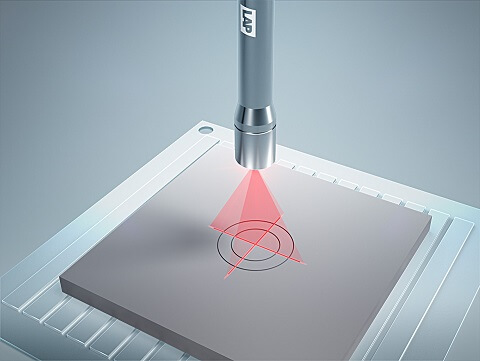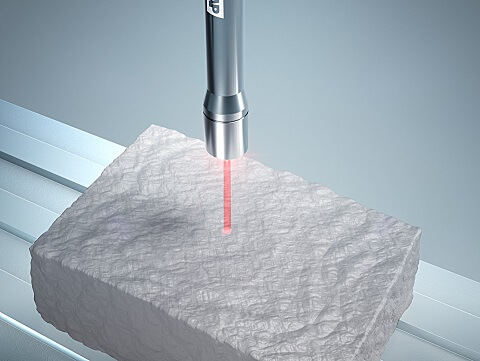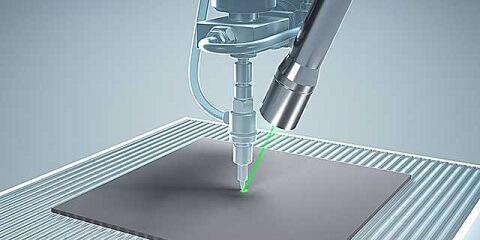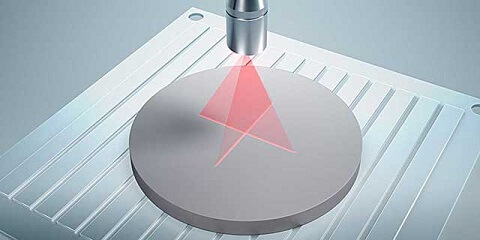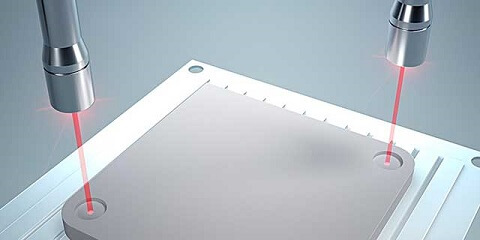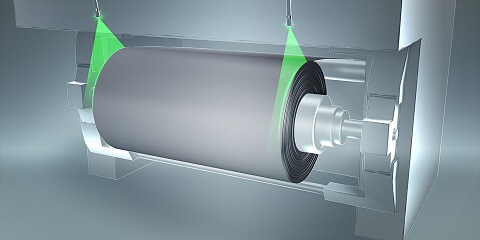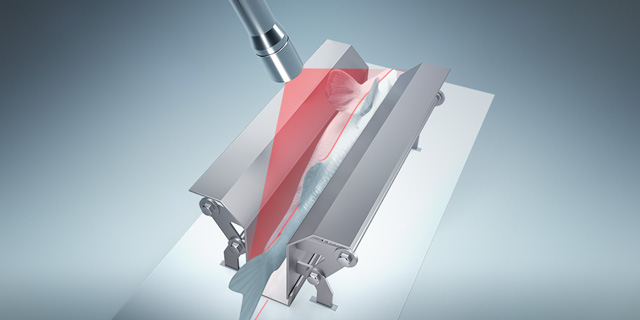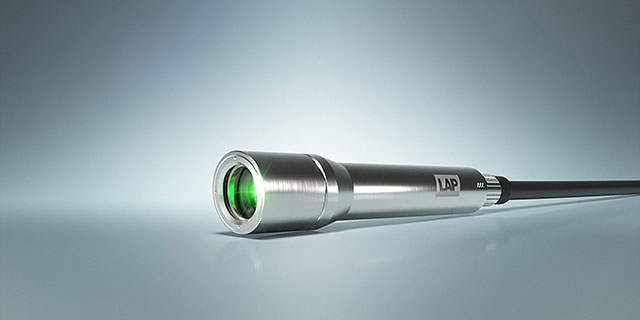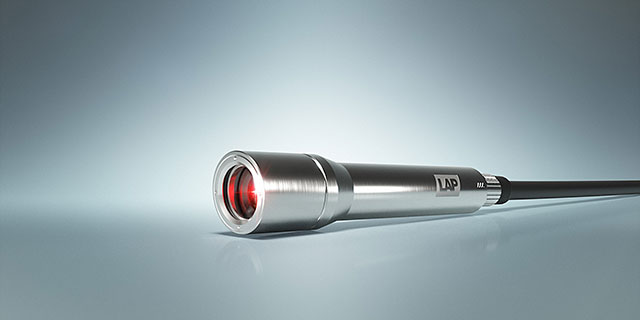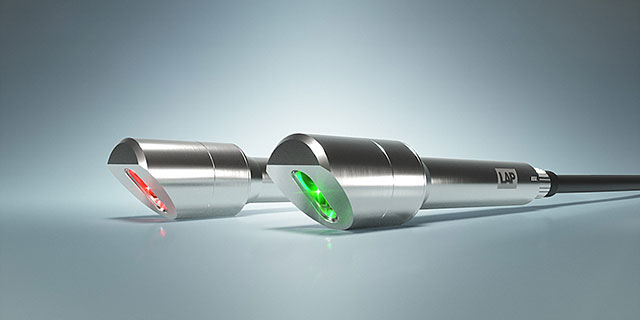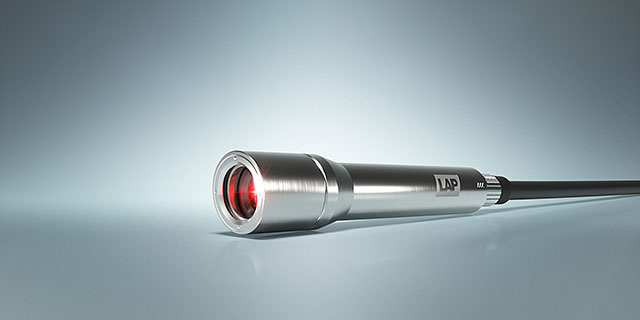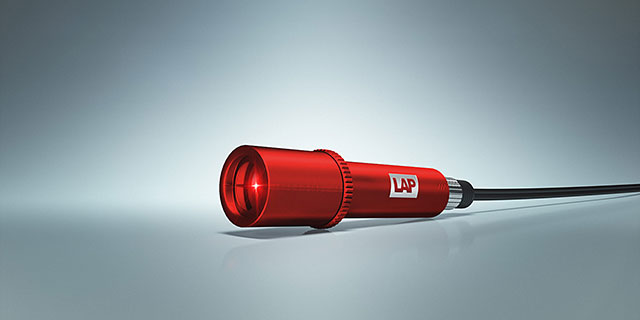Why LAP positioning lasers ?
Which factors affect the projection ?
The geometry of the setup, the ambient conditions and the laser itself can each affect the size and visibility of the projected laser image.
We have provided some useful information below to help you decide which model and power rating are best for you.
Explore our compact microlearning videos to see LAP's positioning lasers in various environments.
Our experienced sales team is also on hand to support you in finding the optimal solution for your application.
Line, cross or point ?
Depending on the task, you can select one or several industrial points, lines or crosshair lasers.
- Point lasers are best for single work points or origins of ordinates.
- Line lasers show the path of a tool, such as cutting or bending lines.
- A single crosshair laser is used to outlines corners. Two crosshairs serve as guides for placing rectangular objects like labels.
It is also possible to use a combination of these lasers. For complete outlines, polylines or organic shapes, please have a look at our laser projectors.
It is important to account for parallax error: If not projected exactly perpendicularly, the laser spot, line or crosshair may “move” as the distance to the laser changes.
What laser color has the best visibility ?
Rule of thumb: Green lasers tend to be more suitable for darker surfaces.
- In general, the human eye is more sensitive to green light than red light.
- Still, the surface color and structure of your object may be better suited for red lasers (see next topic).
Our sales team will be happy to help you find the option that suits you best.
How do material, surface structure and ambient condition affect visibility ?
The visibility of a laser depends on the light absorbed or reflected by the surface you are projecting on.
Rule of thumb: The more light is absorbed, the more laser power you need.
- Transparent or translucent materials, e.g. glass, don’t reflect much light. It can be very difficult to see laser lines projected onto these materials, if they are visible at all.
- Matte black surfaces absorb a lot of light and reflect little. Here you need a lot of laser power to get a visible spot, crosshair or line.
- Wet, dusty or greasy surfaces have varying reflectivity. Results can only be found by testing.
- Rougher surfaces like the bark of a tree or milled grooves may swallow a point and only show many small sections of a line.
Give our sales team a description and they will be happy to support you.
Can you see a laser line in bright sunlight ?
Rule of thumb: Avoid direct sunlight.
- The laws of physics may prevent even a strong laser from outshining direct sunlight.
- A strong laser will still be visible in indirect daylight or artificial light.
- If operating the laser in daylight, try to shield the projection area using simple means like curtains or mobile partitions.
How does ambient light influence the visibility ?
To get a bright line, the laser needs to be more powerful than the ambient light.
Rule of thumb: The brighter the surroundings, the more laser power you need.
- In twilight, little laser power is necessary (1 to 5 mW).
- Artificial light requires medium power (10 to 15 mW).
- Maximum power is needed for use in daylight (30 to 40 mW).
How long is the line of a laser ?
There are several factors that affect the length of a laser line.
Advice: Make a sketch of the geometry.
Rule of thumb: The longer the line, the more laser power you need.
Brightness distribution
- In general, a diode laser source produces an oval spot with a Gaussian brightness distribution.
Its cross section is shaped like a bell: very bright in the center, with its brightness decreasing towards the edges. - This brightness distribution is expanded by optical means to generate a line. Thus, if you mount a line laser perpendicular to a surface, the brightness of the line will be strongest at the center and decrease towards its ends (exception: XtrAlign HU lasers with a special optics design).
- The line ends as it reaches the end of the opening angle, or if the ambient light is brighter than the line.
Angle to surface
- The brightness distribution changes if the laser is not mounted perpendicularly to the surface. As the line approaches the laser, it becomes brighter before reaching its maximum. After the maximum, the brightness decreases over a longer distance, depending on the angle.
- For low mounting positions, LAP offers the XtrAlign HU line lasers with special optics and an exit angle of 45° to the housing. The laser line starts directly below the housing and continues with nearly consistent brightness until the end of the line. The overall length depends on the distance to the surface.
Opening angle
- The line will be short close to the surface and become longer as the distance to the surface increases. This is a geometric principle known as the “intercept theorem”.
- The brightness of the line is reduced as the same laser power is distributed over a longer line. The same applies to crosshairs. Points tend to maintain their brightness if the laser can be refocused.
- After a certain distance, lines and points can no longer be focused; lines get wider and points get larger while both decrease in brightness. The maximum distance for getting a sharp line, crosshair or point is about 30 m.
Laser power
- The higher the power, the longer the line will be brighter than the environment and thus remain visible.


